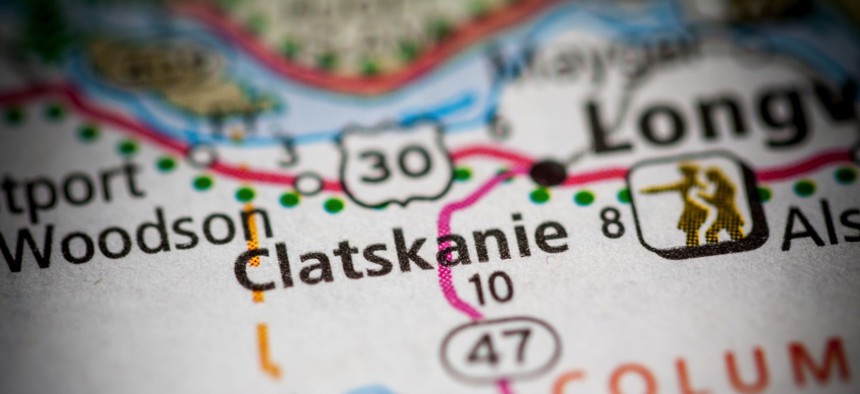Piloting Internet Paid for in Cryptocurrency

Proponents say incentivized mesh networks offer cheaper, faster service stood up by local entrepreneurs, civic hackers or homeowners associations.
Small businesses in a rural Oregon town have teamed with an internet infrastructure company to pilot a new kind of broadband network, one that proponents say could bring cheaper, faster service to underserved areas.
Community members in Clatskanie began exploring Althea’s incentivized mesh network—in which wireless routers pay each other for bandwith—about a year ago as a potentially less expensive alternative to local internet service providers, or ISPs.
Children miss out on educational opportunities when they can’t use the internet to do their homework, but ISP giants often have little incentive to deliver service to remote areas. Clatskanie, a town of about 1,700 people, is in northwest Oregon.
“It’s felt pretty poignantly here,” Deborah Simpier, cofounder of Althea and a Clatskanie resident, told Route Fifty. “People move away because we don’t have good internet service.”
Major cities like Los Angeles and Detroit are experimenting with other mesh networks, but Althea uses a unique, blockchain-based payment system to credit cryptocurrency based on a router’s bandwith usage.
With a decentralized internet infrastructure, any resident or business in the community may add their own router, or node, to improve the network and extend it to underserved areas. Larger nodes earn operators money.
Althea’s price-aware routing protocol ensures internet traffic follows the cheapest, cryptographically-verified path in real time—switching connectivity providers in seconds. What results is a sustainable local network with a competitive marketplace of providers, Simpier said.
The company began building out its network in early 2018 and currently has about 10 local participants, mostly small businesses, who found the transition to cryptocurrency smooth because of familiarity with PayPal and Venmo, Simpier said.
Participants plan to form a legal cooperative to streamline billing and central management of rooftop router placement, and Althea will set up a “subnet” that allows new members to be added and allocated IP addresses.
Towers and antennae cost about $2,000 for a high-bandwidth connection that can be sold to rooftop routers connected to them, and so on down the line. A gateway node might sell its connection for 5 cents a gigabyte and a consumer at the end of the chain purchase it for 20 cents a gigabyte.
In the beginning, small entrepreneurs will be the first to capitalize on the infrastructure, but in the long run Jehan Tremback, CEO of Althea, said they expect professional organizations and companies will all be “part of one network.”
While not yet part of Althea’s software, organizations will eventually be able to cap the price per gigabyte so no one pays more than, say, 20 cents per gigabyte in a subnet to prevent certain routers from being gouged. Should an intermediate note raise its price too high, “they’ll find they just took themselves offline,” Tremback said.
Users may eventually be given the ability to adjust whether they want a cheaper versus a faster connection, he added.
Clatskanie city officials are open to any technology that could help close the “digital divide,” Simpier said, and the Oregon Department of Forestry is offering Althea discounted rates on its towers for locating equipment.
While Althea isn’t working directly with city governments currently, it’s conceivable that one could pay for high-bandwith fiber access to a tall building and set up a node there, while leaving the task of spreading the network to surrounding neighborhoods to local entrepreneurs, civic hackers or homeowners associations. Althea is exploring working with the latter in Santa Monica, California.
“It might be a way for municipalities to not incur the huge expense of doing a full rollout,” Tremback said.
Dave Nyczepir is a News Editor at Government Executive’s Route Fifty and is based in Washington, D.C.
NEXT STORY: Federal Funds Set to Flow to New Light-Rail Line in Seattle Area






